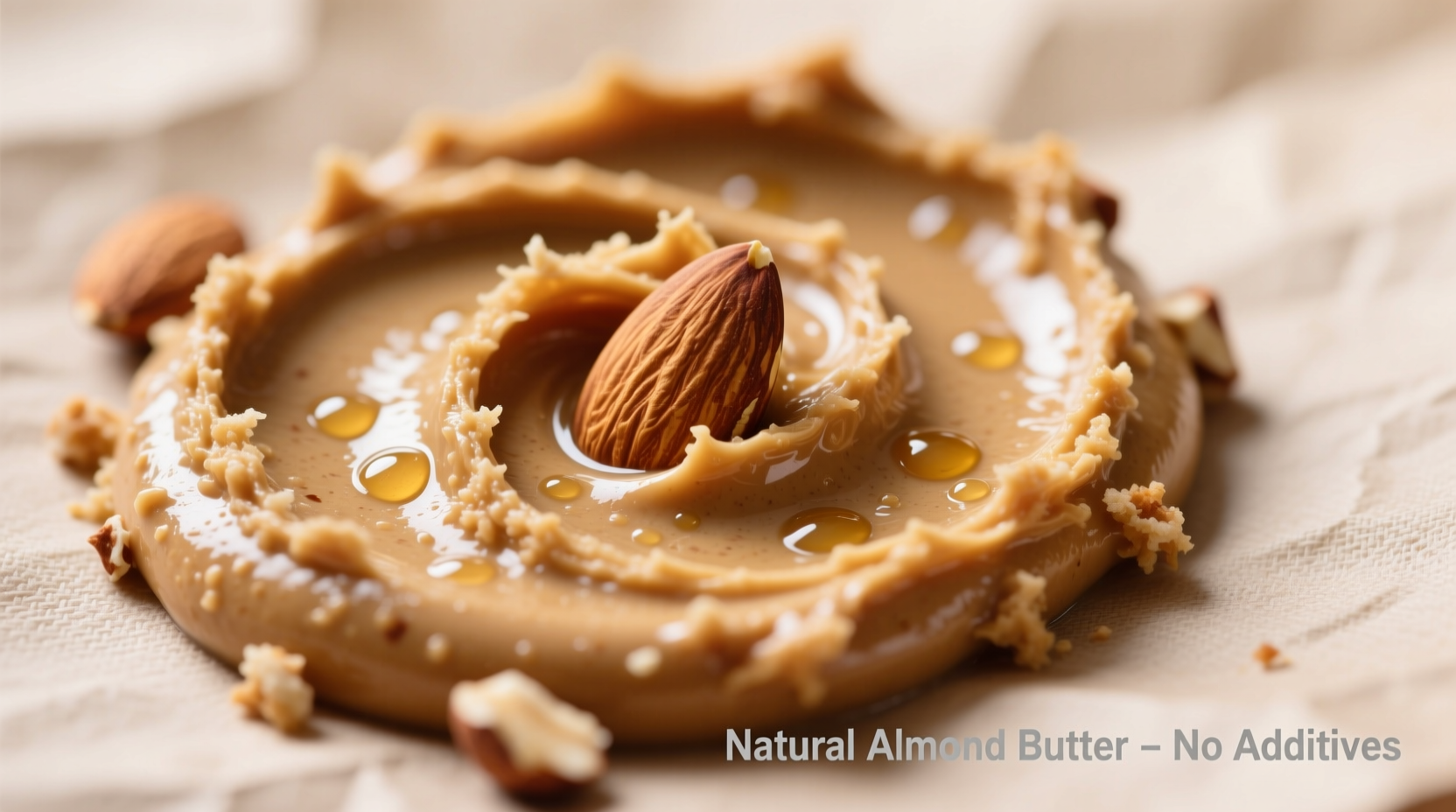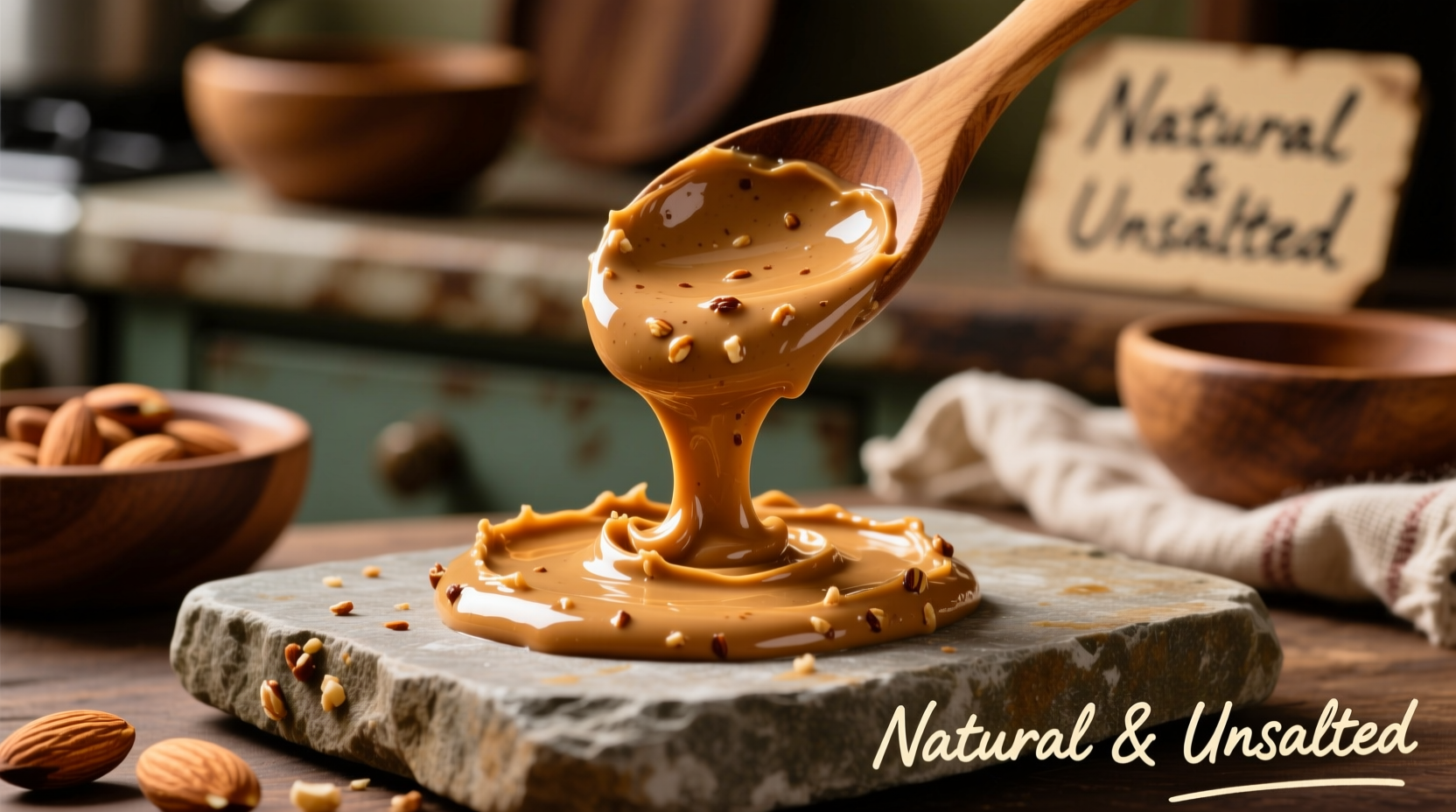If you've ever wondered what does almond butter taste like compared to other nut spreads, you're not alone. This increasingly popular alternative to traditional peanut butter offers a distinctive flavor profile that appeals to health-conscious eaters and culinary enthusiasts alike. Understanding its unique taste characteristics helps you make informed choices for cooking, baking, or simply enjoying it straight from the spoon.
The Core Flavor Profile of Almond Butter
Almond butter delivers a sophisticated flavor experience that begins with pronounced nuttiness, followed by natural sweetness, and finishes with earthy notes. Unlike peanut butter's sometimes sharp or bitter edge, almond butter provides a more rounded, mellow taste that many describe as sophisticated and less aggressive on the palate.
When sampling high-quality, unsweetened almond butter, you'll notice:
- A deep roasted almond essence (especially in roasted varieties)
- Natural sweetness from the almonds themselves
- Subtle grassy or floral notes in raw almond butter
- Minimal bitterness when properly processed
- A clean finish without the oily aftertaste found in some peanut butters
| Nut Butter Type | Primary Flavor Notes | Sweetness Level | Texture Characteristics |
|---|---|---|---|
| Almond Butter | Nutty, earthy, subtle floral | Moderate natural sweetness | Smooth with slight graininess |
| Peanut Butter | Strong nutty, sometimes bitter | Low natural sweetness | Creamy to thick |
| Cashew Butter | Creamy, mild, buttery | Higher natural sweetness | Very smooth, almost velvety |
| Walnut Butter | Earthy, slightly bitter | Low natural sweetness | Grainy, more fibrous |
How Processing Affects Almond Butter Flavor
The taste of almond butter varies significantly based on processing methods. Understanding these differences helps you select the right product for your culinary needs:
Raw vs. Roasted Almond Butter
Raw almond butter maintains the almond's natural enzymes and offers a lighter, more delicate flavor with subtle grassy notes. It typically has a paler color and slightly more bitter edge than roasted varieties. According to research from the USDA Agricultural Research Service, raw almonds contain higher levels of certain volatile compounds that contribute to these distinctive grassy notes.
Roasted almond butter, by far the more common variety, develops deeper, richer flavors through the Maillard reaction. The roasting process enhances nuttiness while reducing natural bitterness. Professional chefs like Antonio Rodriguez note that "proper roasting at controlled temperatures (typically 300-325°F for 10-15 minutes) maximizes flavor development without creating burnt notes that compromise quality."

Sweetened vs. Unsweetened Varieties
Many commercial almond butters contain added sweeteners, which significantly alter the flavor profile:
- Unsweetened almond butter showcases the pure nut flavor with natural sweetness (almonds contain about 2-4% natural sugars)
- Honey-sweetened varieties add floral notes that complement almond's natural profile
- Maple-sweetened options introduce caramelized woodsy notes
- Vanilla-infused versions enhance the natural sweetness without added sugar
A sensory analysis published by the Institute for Food Safety and Health found that consumers generally prefer almond butter with minimal added ingredients, as the pure nut flavor shines through without competing flavors.
Texture's Role in Flavor Perception
Texture significantly influences how we perceive almond butter's taste. The mouthfeel experience includes:
- Smooth almond butter provides consistent flavor release across the palate
- Crunchy varieties with added almond pieces create flavor bursts with each bite
- Natural separation (oil rising to the top) indicates no stabilizers—stirring thoroughly ensures balanced flavor
- Over-processing can create bitterness as almond oils oxidize
Food scientists at the Culinary Institute of America have documented that proper emulsification of almond butter creates a more harmonious flavor experience, as uneven texture can lead to inconsistent taste perception throughout consumption.
When Almond Butter Shines: Optimal Usage Scenarios
Understanding almond butter's flavor profile helps determine its best culinary applications:
- Breakfast applications: Pairs beautifully with tart fruits like apples or berries that balance its richness
- Baking substitute: Works well in cookies and energy balls where its milder flavor won't dominate
- Smoothie booster: Adds creaminess without overwhelming other ingredients
- Asian-inspired sauces: Complements ginger and garlic better than peanut butter in many applications
However, almond butter's more delicate flavor means it doesn't perform as well in recipes requiring bold peanut flavor, such as traditional satay sauces or certain candy applications where peanut butter's stronger profile is essential.
Common Misconceptions About Almond Butter Taste
Several myths persist about almond butter's flavor characteristics:
- "Almond butter tastes just like peanut butter"—In reality, it's significantly less salty with more pronounced natural sweetness
- "All almond butter is bitter"—Quality products with proper processing have minimal bitterness
- "Raw almond butter is always healthier"—While it preserves certain enzymes, roasting enhances flavor compounds and improves digestibility for many people
- "The oil separation means it's gone bad"—Natural separation indicates no stabilizers; simply stir thoroughly before use
Professional taste testers consistently rate properly prepared almond butter as having a more complex flavor profile than many realize, with subtle variations depending on almond variety (California vs. Spanish almonds, for instance) and processing techniques.
Developing Your Almond Butter Palate
To truly appreciate almond butter's nuanced flavor, try these tasting techniques:
- Start with a small amount at room temperature (cold dulls flavors)
- Let it rest on your tongue for 10-15 seconds before swallowing
- Notice the progression from initial nuttiness to mid-palate sweetness to earthy finish
- Pair with neutral carriers like apple slices to isolate the flavor
- Compare different brands side-by-side to identify subtle variations
As you develop your palate, you'll begin noticing distinctions between almond butter made from blanched versus unblanched almonds, with the skins adding subtle tannic notes that some prefer in savory applications.











 浙公网安备
33010002000092号
浙公网安备
33010002000092号 浙B2-20120091-4
浙B2-20120091-4